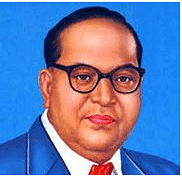Chapter Test:The Constitution - 2 - CTET & State TET MCQ
20 Questions MCQ Test Social Studies & Pedagogy Paper 2 for CTET & TET Exams - Chapter Test:The Constitution - 2
Name the procedure through which changes can be brought out in the Constitution.
Name the Chairman of the Drafting Committee who was responsible for framing the Constitution with the help of the image given below:

| 1 Crore+ students have signed up on EduRev. Have you? Download the App |
One of the key features on the India Constitution is Federalism. Which one among the following best describes Federalism
During which year did Nepal adopt an interim constitution ?
A set of statements with respect to the constitution of a country are given below. Select the one that is not applicable
Define the term Sovereign as referred to in Indian Constitution.
A sequence of events that happened in Nepal proves the people's struggle for democracy. When did this people's struggle for democracy start ?
Pick out the date on which the Indian Constitution was passed by the Constituent Assembly.
What does the term Socialist refer to as per Indian Constitution
What was the huge task that the members of the Constituent Assembly before them ?
Select the correct date on which the Indian Constitution came into effect
A constitution not only includes the type of government, but also an agreement on certain ___________ that they all believe the country should uphold.
The Indian Constitution begins with a __________
A few key features of the Indian constitution are given below. Pick out the inappropriate one.
Name the President of the Constituent Assembly who appointed a drafting committee to frame the Constitution
A few reasons as to why a Constitution is required in a country are given below. Pick out the inappropriate one.
Which one of the following is a fundamental right ?
Which statement from the following is in the Preamble of Indian Constitution ?
|
61 videos|119 docs|77 tests
|
|
61 videos|119 docs|77 tests
|

















